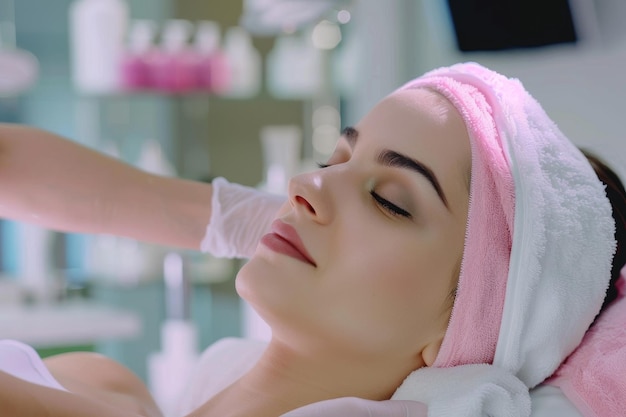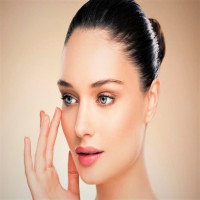What to Expect from Your First Hydrafacial Treatment

Strong 8k brings an ultra-HD IPTV experience to your living room and your pocket.
Skincare has evolved significantly in recent years, offering innovative treatments designed to address various skin concerns while leaving your complexion refreshed and glowing. Among these treatments, Hydrafacials have gained popularity for their ability to cleanse, exfoliate, and hydrate the skin in a single session. If you’re considering trying a Hydrafacial for the first time, it’s natural to have questions about what to expect during the process. In this article, we’ll explore what happens during a Hydrafacial in Dubai, how it feels, and the potential results.
Understanding the Hydrafacial Process
Before you undergo your first Hydrafacial treatment, it’s helpful to understand the process and the technology behind it. A Hydrafacial is a non-invasive, multi-step treatment that uses a unique device to cleanse, extract impurities, and hydrate the skin. It’s suitable for all skin types and can be customized to target specific concerns like acne, dryness, or uneven skin tone.
The treatment typically begins with a thorough cleansing of the skin to remove makeup, dirt, and oil. Next, the exfoliation step removes dead skin cells, allowing fresh, new skin to emerge. This is followed by a gentle acid peel that further exfoliates the skin without causing irritation. The final steps involve extraction, where debris is suctioned out from the pores, and hydration, where nourishing serums are infused into the skin.
The Experience of Your First Hydrafacial Treatment
Now that you’re familiar with the process, you may be wondering what to expect from your first Hydrafacial treatment. One of the most frequently asked questions is about how the treatment feels. Will it hurt? Is it uncomfortable? Rest assured, most people find Hydrafacials to be a relaxing and soothing experience.
The Hydrafacial device uses a gentle vacuum to perform extractions, and many individuals describe the sensation as a light suction or pressure on the skin. Unlike traditional extractions that can be painful, the Hydrafacial method is much more comfortable and doesn’t leave the skin red or irritated afterward. The treatment is non-invasive, meaning no needles or harsh chemicals are involved, making it an excellent option for those looking for a pain-free facial experience.
What Happens During the Consultation?
Before your first Hydrafacial treatment, you will likely have a consultation with your esthetician or skincare professional. This step is essential to ensure that the treatment is tailored to your specific skin concerns. During the consultation, your esthetician will assess your skin type and discuss any issues you’d like to address, such as acne, fine lines, or hyperpigmentation.
They may also ask about your skincare routine and any treatments you’ve had in the past. Be sure to mention if you’re using any prescription products, such as retinoids, as these could affect how your skin reacts to the treatment. Once your esthetician has a clear understanding of your skin’s needs, they’ll create a customized Hydrafacial plan to ensure you get the best possible results.
The Treatment: Step-by-Step
When you’re ready for your Hydrafacial treatment, the process will begin with a gentle cleansing of the skin to remove surface impurities. This step helps prepare your skin for the treatment and ensures that the active ingredients used during the Hydrafacial can penetrate effectively.
Exfoliation
The exfoliation step is where the magic begins. The Hydrafacial device uses a small, spiral-tipped handpiece to exfoliate the skin, removing dead skin cells and allowing your fresh, healthy skin to shine through. This step also helps to unclog pores and smooth out any rough patches on the skin’s surface.
Gentle Acid Peel
Next, your esthetician will apply a light acid peel, usually made of glycolic or salicylic acid, to further exfoliate the skin. Don’t worry — this step is not like the harsh chemical peels you may have heard of. The acid used in a Hydrafacial is mild and designed to exfoliate the skin without causing redness or peeling. Most people feel a slight tingling sensation during this step, but it’s generally very comfortable.
Extraction
The extraction phase is where the Hydrafacial truly stands out. Using the device’s gentle suction mechanism, your esthetician will painlessly remove debris from clogged pores. This step is especially beneficial for those who struggle with blackheads, whiteheads, or congested pores. Because the suction is so gentle, you won’t experience the discomfort that often accompanies traditional extractions.
Hydration and Infusion
Once your skin has been thoroughly cleansed and exfoliated, the final step is hydration. Your esthetician will apply a serum containing hydrating and nourishing ingredients like antioxidants, peptides, and hyaluronic acid. These ingredients are delivered deep into the skin using the Hydrafacial device, ensuring that your skin is left plump, radiant, and fully hydrated.
How Long Does the Treatment Take?
A Hydrafacial treatment is relatively quick, typically lasting between 30 to 60 minutes. This makes it an excellent option for individuals with busy schedules who want to improve their skin’s appearance without spending hours at the spa. Despite its short duration, the treatment is highly effective, offering immediate results that can be seen and felt as soon as the session is complete.
What Results Can You Expect After Your First Hydrafacial?
The results of your first Hydrafacial treatment are often noticeable right away. Many people report that their skin feels softer, smoother, and more hydrated immediately after the procedure. Because the treatment includes exfoliation, extraction, and hydration, you’ll also notice that your complexion looks brighter and more even-toned.
Hydrafacials are also known for their ability to improve the appearance of fine lines, wrinkles, and enlarged pores. While one treatment can provide a noticeable improvement, regular sessions are recommended for long-lasting results. Depending on your skin’s needs, your esthetician may suggest a series of treatments spaced several weeks apart to achieve optimal skin health.
Is There Any Downtime After a Hydrafacial?
One of the best things about Hydrafacials is that there is little to no downtime after the treatment. Unlike other facial treatments that can leave the skin red, irritated, or flaky, Hydrafacials are gentle enough that you can return to your regular activities immediately after the session. Some people may experience slight redness immediately following the treatment, but this usually subsides within a few hours.
Aftercare Tips for Your Skin Post-Treatment
Although Hydrafacials don’t require any specific aftercare, it’s a good idea to be mindful of your skincare routine in the days following the treatment. To maintain the glowing results of your Hydrafacial, avoid using harsh exfoliants or active ingredients like retinoids for a few days, as your skin will be more sensitive. Instead, focus on keeping your skin hydrated by using a gentle moisturizer and sunscreen.
Final Thoughts on Your First Hydrafacial Experience
Undergoing your first Hydrafacial treatment can be an exciting and rewarding experience. From the relaxing process to the immediate, visible results, a Hydrafacial is an excellent choice for anyone looking to rejuvenate their skin without the discomfort or downtime associated with more invasive treatments. Whether you’re targeting specific concerns or simply want to give your skin a boost, a Hydrafacial offers a refreshing and effective solution for glowing, healthy skin.
Note: IndiBlogHub features both user-submitted and editorial content. We do not verify third-party contributions. Read our Disclaimer and Privacy Policyfor details.



